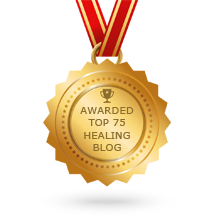 |
| Source |
We live in a world where – if you have the means – pain and suffering are to be avoided at all costs. We are always looking for the next “quick fix” to alleviate discomfort with the least amount of effort required. In many cases, this means treating the symptoms while ignoring the root cause of the problem.
In the United States, we live in a society so uncomfortable with emotional pain that when someone dies, society expects the outward mourning period to end once the funeral is over. When the bereaved do not cooperate with these prescribed time tables, they are often accused of “wallowing” in their grief. They are indignantly told to “move on” and “get over it.”
Do these statements mean prolonged outward grief is a sign of weakness? Maybe self-pity? Perhaps it means they think the bereaved secretly enjoy the pain, and the attention it brings? For those of us who have lost someone dear to us, we know that it could not be further from the truth. If we could, we would give ANYTHING to not feel this pain. The hidden meaning behind these statements is that our outward projection of sadness is an unwelcome reminder of all the negative emotions they’ve managed to stuff deep inside until the pain went away. I see it kind of like “out of sight, out of mind”.
So which is healthier? To bury the pain, only to have it lie dormant until some tragedy unearths it again – but this time stronger and more painful? Or to acknowledge that there is no quick fix to alleviate the overwhelming pain of losing someone you have built your life – and in some cases, your identity – around?
I would equate the first option to following the latest fad diet to lose weight quickly without exercising or changing your eating habits. Maybe you’ll pop some appetite suppressing pills and lose weight in the short term, but the chances of you keeping the weight off are slim, and the reality is that the next time you try to lose weight, it will likely be harder than the time before. The second option would mean facing the harsh reality that transforming your body to a stable, healthy weight requires permanently changing your eating habits and amount of regular exercise. It probably even requires you to readjust your expectations of what your ideal body should look like (sadly, most of us will never look like supermodels or pro athletes). In other words, the second option is HARD WORK, but it has the greatest likelihood of becoming a permanent reality.
But if I’m being honest here, I have to admit that given the opportunity, I would have gladly chosen to bury the overwhelming pain when my daughter died. Suppressing pain and emotions is what I had done my whole life until that point. The fact is that the pain of losing someone I loved MORE than my own life was too much to bury. I reluctantly – and resentfully – took on more pain than I could bear. I did so because I had no other choice.
For the first time in my life, I learned how to slowly take small steps with that unbearable load on my back. I learned that by sharing my story and my pain with others – whether it was support groups, counseling, or with other bereaved individuals – the load was reduced, even if it was only a very slight amount each time.
By reducing the load over months and then years, it became easier to carry. I have since come to understand that the load will never fully go away, but I have learned how to balance it with the rest of my life. And as time goes on, the balance will become easier still. That is not to say that occasionally, the load won’t suddenly feel nearly as heavy as it did when my grief was new. And when it does, I’ll remember how to go back to taking small, careful steps until it feels lighter again.To all those who cringe in discomfort when they see me experiencing outward emotional pain, I say this: just let me be sad. My intention is not to make you feel uncomfortable. I don’t expect – or want – you to follow in my footsteps. But I do expect you to respect the path I have been forced to take on my journey through life. I truly hope you never have to carry this load yourself.
Your feedback is welcome! Please feel free to leave a comment or a question, or share a tip, a related article or a resource of your own in the Comments section below.
If you’d like Grief Healing Blog updates delivered right to your inbox, you’re cordially invited to subscribe to our weekly Grief Healing Newsletter. Sign up here.
Related Articles:

























